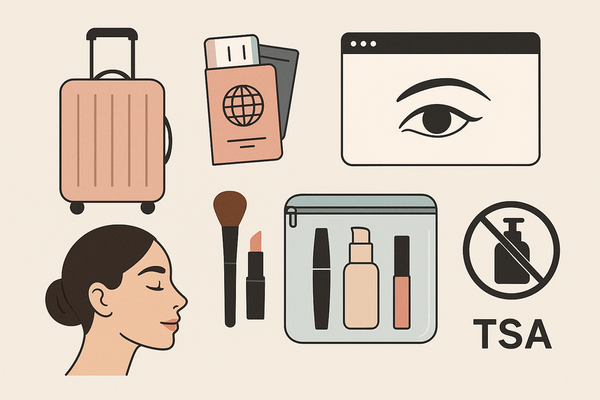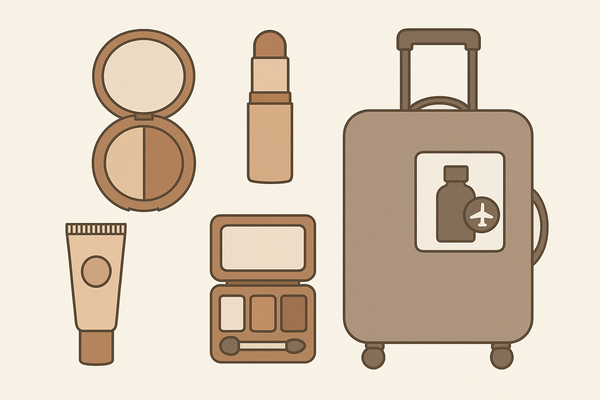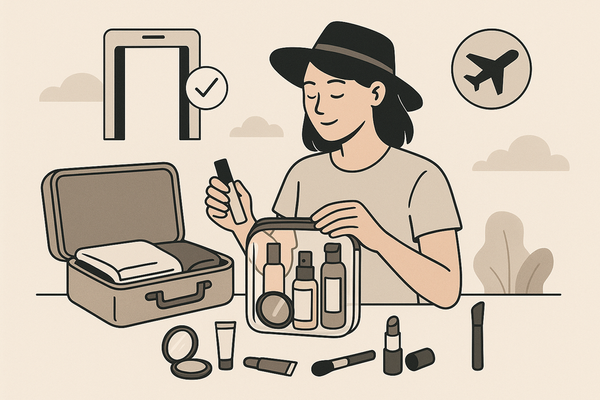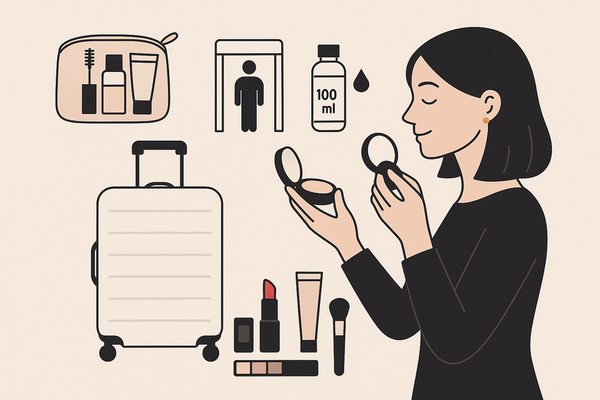Environmentally Friendly Makeup Methods: Your Complete Guide to Sustainable Beauty
Discover environmentally friendly makeup methods for a sustainable beauty routine. Learn about clean ingredients, ethical sourcing, and eco-friendly packaging choices.
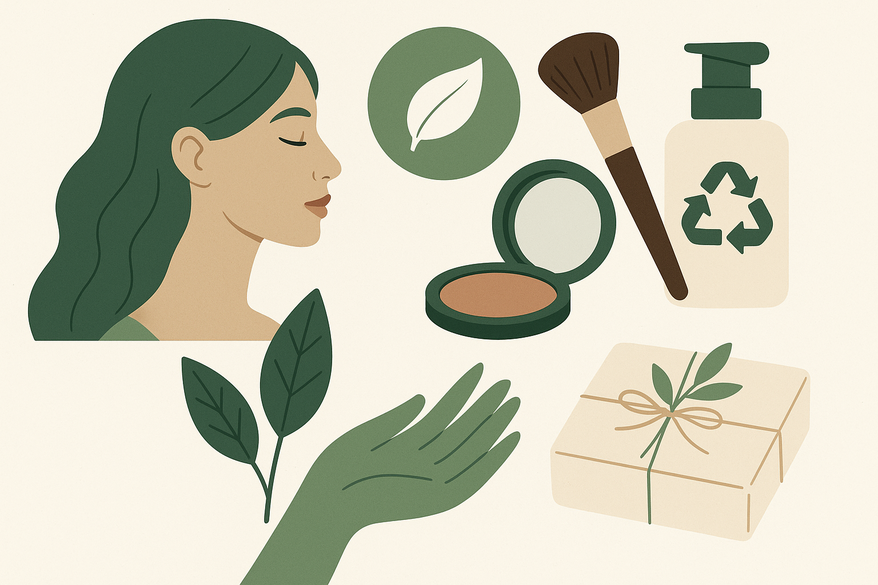
Estimated reading time: 8 minutes
Key Takeaways
- Clean ingredients, ethical sourcing, and sustainable packaging are the cornerstones of eco-friendly makeup.
- Switching to green beauty offers health benefits (fewer irritants), environmental gains (less waste), and social impact (fair labor).
- Look for certifications like USDA Organic, Leaping Bunny, and ECOCERT to ensure product integrity.
- Incorporate DIY recipes and multi-use products to minimize packaging and cost.
- Transition gradually: swap one item at a time and adopt reusable tools and proper disposal methods.
Table of Contents
- Understanding Environmentally Friendly Makeup Methods
- Benefits of Environmentally Friendly Makeup Methods
- Key Strategies for Adopting Environmentally Friendly Makeup Methods
- Highlighting Eco-Friendly Makeup Products and Brands
- DIY and At-Home Environmentally Friendly Makeup Solutions
- How to Transition to a Greener Makeup Routine
- Additional Tips and Resources
- Conclusion
- FAQ
Understanding Environmentally Friendly Makeup Methods
“Environmentally friendly makeup methods” are ways to apply and use cosmetics that help protect the earth. They focus on clean ingredients, ethical sourcing, and green packaging. These sustainable cosmetics aim to reduce pollution, avoid toxic chemicals, and honor human and animal rights. As more people worry about water pollution, health impacts, and fair work, eco-friendly makeup becomes vital. This guide will show you how to choose green beauty tools, swap out harmful products, and even make your own makeup at home. By the end, you’ll have clear tips to support people, animals, and the planet.
For eco-friendly shade and packaging recommendations, you can use Makeup Check AI, which helps you choose products with minimal waste.
Discover the latest in clean beauty makeup trends and how they shape a greener industry.
Core Principle 1 – Clean Ingredients
- Use natural, plant-based oils, butters, and minerals.
- Skip parabens, phthalates, synthetic fragrances, and known toxins.
- Benefits: fewer skin irritations, better biodegradability.
Core Principle 2 – Ethical Sourcing
- Ingredients come from farms or co-ops that protect forests and rivers.
- Workers earn fair wages and work in safe conditions.
- Example: Shea butter from a women’s co-op in Ghana helps local families.
Core Principle 3 – Sustainable Packaging
- Bottles and jars are recyclable, biodegradable, or refillable.
- Industry waste: about 120 billion units of plastic packaging every year.
- Brands offer metal compacts or glass jars you can refill.
Contrast with Conventional Makeup
- Often made with petrochemicals and artificial dyes.
- Toxic run-off can harm rivers and oceans.
- Most packaging ends up in landfills or the ocean.
- Some brands still test on animals and hide supply-chain details.
Benefits of Environmentally Friendly Makeup Methods
Adopting green beauty practices yields a trifecta of advantages:
Health Benefits
- Lower risk of allergic reactions and irritation.
- Fewer hormone-disrupting chemicals.
- Better long-term skin health with vitamins and antioxidants.
Environmental Benefits
- Less water and energy used via organic farming.
- Reduced carbon footprint in production and shipping.
- Less waste thanks to recyclable or biodegradable tubes and compacts.
Social Benefits
- Cruelty-free testing: no animals harmed.
- Supports fair trade and safe labor.
- Encourages brands to be transparent about ingredients and impact.
Key Strategies for Adopting Environmentally Friendly Makeup Methods
Strategy 1 – Choose Clean, Natural Ingredients
- Read labels for organic oils, botanical extracts, and mineral pigments.
- Avoid parabens, phthalates, synthetic dyes, and petrochemicals.
Strategy 2 – Look for Certifications
- USDA Organic: verifies at least 95% organic content.
- Leaping Bunny: guarantees cruelty-free testing.
- Vegan Society: confirms no animal-derived ingredients.
- ECOCERT: audits eco-friendly sourcing and packaging.
Strategy 3 – Support Transparent Brands
- Brands with clear ingredient lists on their websites.
- Public sustainability reports and carbon-neutral pledges.
- Third-party audits and community reviews.
Strategy 4 – Greener Application & Storage
- Use washable cotton pads, bamboo brushes, or metal spatulas.
- Refill palettes instead of buying new compacts.
- Compost or recycle empty containers properly.
Highlighting Eco-Friendly Makeup Products and Brands
- RMS Beauty – Raw, food-grade ingredients; glass jars; COSMOS-approved.
- ILIA Beauty – Sugarcane tubes; B Corp; plant-oils foundation.
- Kjaer Weis – Refillable metal compacts; COSMOS; Fair Trade.
- Pacifica Beauty – 100% vegan; recyclable packaging; PETA-approved.
- e.l.f. Cosmetics – Cruelty-free; affordable eco-lines; vegan formulas.
DIY and At-Home Environmentally Friendly Makeup Solutions
Recipe 1 – Natural Lip Balm
- 2 tbsp beeswax pellets
- 2 tbsp coconut oil
- Optional: 5 drops essential oil (peppermint or lavender)
Steps:
- Melt beeswax and coconut oil in a double boiler.
- Stir in essential oil off heat.
- Pour into a reusable tin or glass jar.
- Let cool, then cap.
Recipe 2 – Tinted Blush Powder
- 1 tsp beetroot powder
- ½ tsp arrowroot starch or cornstarch
Steps:
- Mix beetroot powder and arrowroot until even.
- Store in a small glass jar with tight lid.
- Apply with a clean brush for a natural flush.
How to Transition to a Greener Makeup Routine
- Do an Inventory – Lay out all your current makeup; note eco-friendly vs. not.
- Swap One Item at a Time – Start with high-use items like foundation and mascara.
- Embrace Multi-Use Products – Tinted balms for lips, cheeks, and eyes save money and packaging.
- Learn Label Decoding – Recognize “paraben-free,” “phthalate-free,” or “ECOCERT.”
- Adopt Green Habits – Clean brushes weekly with castile soap; switch to reusable cotton rounds.
For a comprehensive approach, check the sustainable makeup routine guide.
Additional Tips and Resources
Tool Maintenance
- Wash brushes and sponges with biodegradable cleanser once a week.
- Lay flat on a towel to air dry, preventing bacterial growth.
Further Reading
- Environmental Working Group (EWG) Skin Deep Database
- Ogle School Eco-Friendly Makeup Blog
- Tokenatura Sustainability News
- Explore disposal methods at the eco-friendly makeup disposal guide.
Future Trends
- Biodegradable packaging made from algae or mushroom mycelium.
- Lab-grown pigments that reduce farming impact.
- Waterless makeup formats like powder concentrates and solid sticks.
Conclusion
Switching to environmentally friendly makeup methods brings clear gains for your skin, health, and the earth. Clean ingredients soothe your face. Ethical sourcing protects people and habitats. Sustainable packaging cuts waste. You can start small—swap one product or try a DIY recipe. Share your green beauty journey on social media and connect with eco-beauty groups. Together, we can transform the beauty world into one that cares for our planet.
Discover how the AI Makeup Generator can support your sustainable makeup choices with data-backed shade and product recommendations.
FAQ
How can I tell if a makeup product is truly eco-friendly?
Look for third-party certifications such as USDA Organic, COSMOS, Leaping Bunny, and ECOCERT. Check ingredient lists for natural oils and avoid synthetic chemicals. Brands that publish sustainability reports often have greater transparency.
Is DIY makeup as effective as store-bought brands?
Homemade recipes can be surprisingly effective, especially for simple items like lip balm and blush. However, they may lack the long-term stability or shade range of commercial products. Treat DIY as a supplement to your routine.
What’s the easiest swap for beginners?
Start with your most-used product—often foundation or mascara. Choose a certified, refillable option or a multi-use tinted balm to reduce packaging and simplify your routine.
How should I dispose of eco-friendly makeup packaging?
Empty containers should be rinsed and sorted by material (glass, metal, plastic). Compost biodegradable packaging if marked safe, or take rigid plastics to local recycling centers. Follow brand guidelines for refill programs when available.

